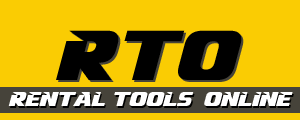September 2017
Every power tool offers different advantages. Three common types of power tools are pneumatic which are powered by compressed air, hydraulic which are powered by a fluid or oil , and electric tools, which use a plug or battery. Each type of power tool comes with its pros and cons. Choosing which tool is best for you should depend on what your specific needs are.
Power
Of
course, the most important thing to consider when choosing between
different power tools is whether it has what it takes to get the job
done. If you need to cut through steel or machine-tighten a bolt, you
will need a certain amount of torque. Choosing a tool for its
convenience or cost really won’t do any good if it isn’t strong
enough to get the job done.
- Pneumatics are strong. The amount of power they offer can be adjusted up or down by allowing the air compressor to deliver more or less power. This has made them the popular tool of choice in places like machine shops and auto shops. More importantly, pneumatics are also often the only choice when there are combustible or explosive atmospheres present.
- Electrics are catching up. It used to be that air tools were the clear winner in this category every time. This was especially true for cordless electric tools which couldn’t offer the same juice. Things are changing. With new technologies in battery and tool design, electric tools are coming to rival air tools in power.
- Hydraulics can smoothly lift and move heavy loads because the fluid or oil is not compressible, compared to air which can become jerky and spongy as the air pressure fluctuates with cylinder movement or load changes. This is also why hydraulic tools often deliver more power and torque. In general, a much larger pneumatic cylinder is needed to obtain the same force that a hydraulic ram can produce.
Cost
Spending too much on a tool is an obvious waste of your company’s dollars. Spending too little could mean not getting exactly what you need. Tools pay for themselves in the work they do for you. When considering cost, find the balance between what you are spending and what you are getting with the type of power tool you choose.
- Pneumatics have larger upfront costs, lower back end costs. Air tools themselves are usually less expensive than their electric counterparts. They also tend to last longer. However, you cannot run an air tool without an air compressor, and those can be very expensive. Air compressors are an expensive and unavoidable up-front cost for pneumatic tools.
- Electrics require less investment. The nice thing about electric tools—corded or cordless—is that they have their own power supply worked in, so you don’t need to invest in a power source. An electric tool will always be a little more expensive than an air tool that performs the same task.
- Hydraulics have the largest upfront cost. The tools themselves can often be costly and the oil must be provided by and routed back to a reservoir, or power pack, which can cost a few thousand dollars in most cases. What you get for your money however is a powerful system with a lot of durability.
Application
So, how do you know if you're picking the right tool with the right power source? It all depends on the job you need to get done. While there may be overlap in the applications for these three power sources, each has its own characteristics that make it more suitable to different tasks.
- Pneumatic tools can be a better option for people who have to worry about contaminating their work environment. There's no risk of a seal breaking and hydraulic fluid leaking out. Also, because the flow rate of air through a compressor is greater than hydraulic, pneumatic tools will generally have a higher operating speed. The drawback is because it is a compressible gas, it may not offer the torque under load you need to get the job done. Impact wrenches and reciprocating saws are two examples of tools that excel under pneumatic power.
- Electric tools typically have the lowest torque and punch of the three types, but in no way does that rule them out of tough jobs. Corded electric tools will, for the most part, provide you with more torque than cordless but lower maneuverability and must be used near a power source, while cordless electric tools will provide maximum mobility but you'll sacrifice torque over time. And, just because there's electricity involved, that doesn't mean they can't be used for wet/dry applications. The Husqvarna K3000W, Makita PW5001C and even underwater tools like the Nemo line of drills, drivers and grinders are testament to the versatility of electric powered tools.
- Hydraulic tools offer the largest amount of torque than the other two because the fluid used is not compressible. Hydraulic systems also have a lower energy cost over time. With pneumatic power, a large amount of energy is lost in the form of heat when the gas gets compressed. This isn't the case with hydraulics, allowing more of the energy to go where you need it. While they are typically more costly when purchasing, they are often more robust and made of higher grade cast metals. Hydraulic tools are better suited to high impact, high torque applications. The Cs Unitec Hammer Drills, Stanley BR87 Underwater Breaker or the Stanley CS06 Underwater Chainsaw show the strength and many uses for hydraulic power.
We hope this post helps you to not only understand some of the differences between these three power sources, but also helped you in determining which power source would fit best for your job. Of course, if you have any questions or need help in anyway you can always reach out to us at 1-866-952-8665 or chat directly with us by clicking the link in the bottom right of our website.





